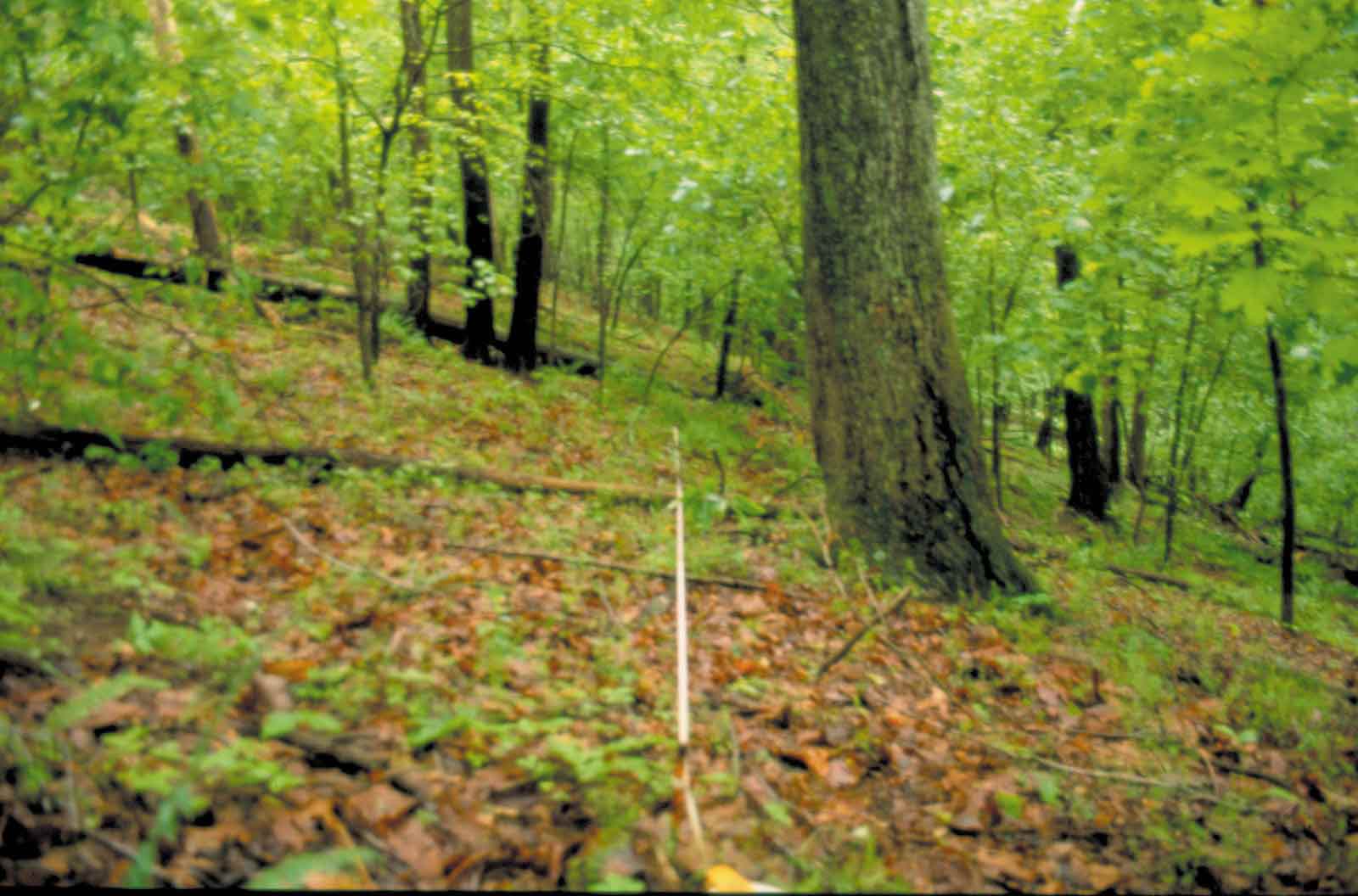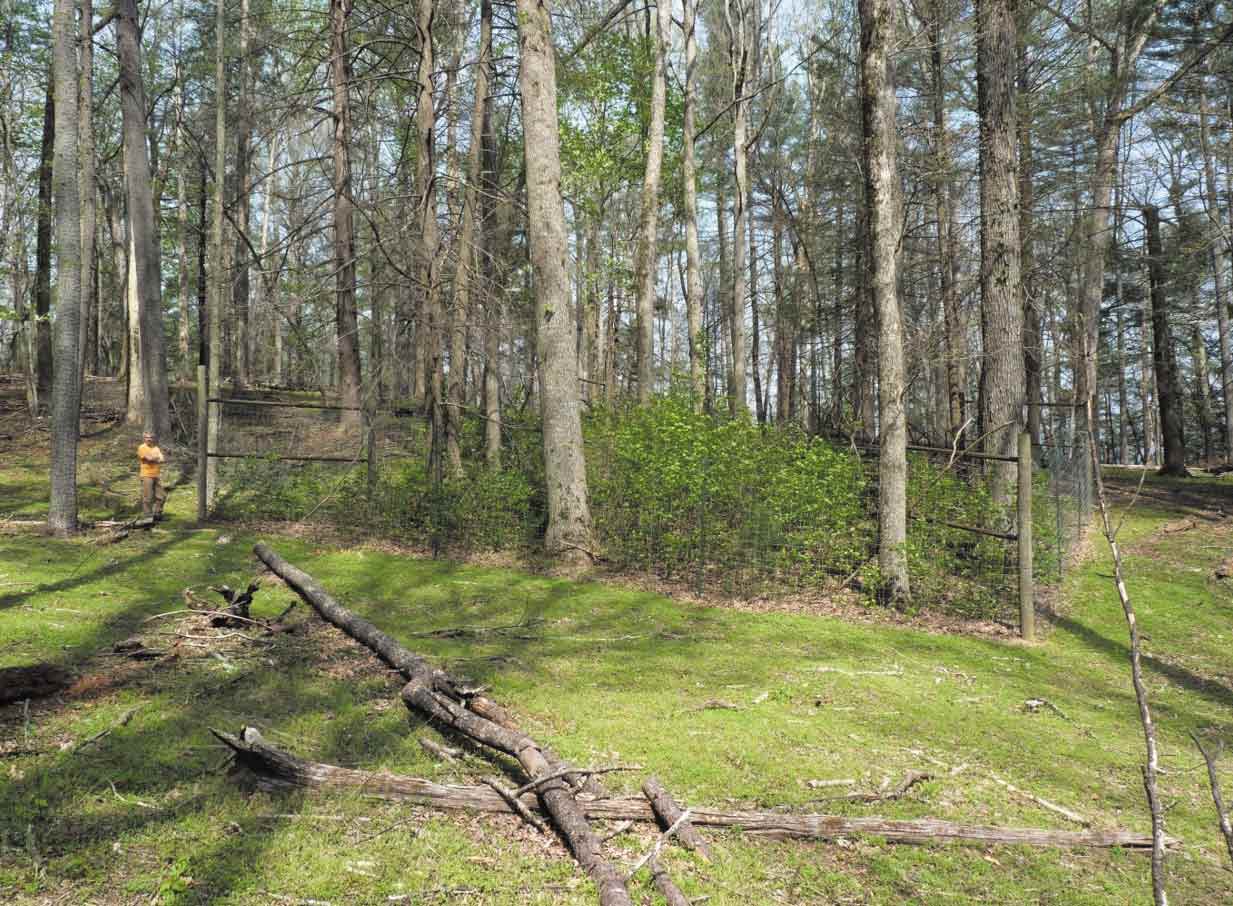Ecological Effects of White-tailed Deer in Hardwood Forests
Of all animal species, the white-tailed is perhaps the one most associated with the forests and fields of the Midwest. Given how commonplace deer are today, it is hard to believe that the species was once extirpated from the state of Indiana. However, unregulated hunting and the conversion of wildlands to agriculture resulted in their elimination from the state by 1893, when the last reported harvest of a wild deer occurred in Knox County. Between 1934 and 1942, deer from Wisconsin, Pennsylvania, and North Carolina were released in Indiana. With a lack of hunting and increased forest cover resulting from land abandonment during the Great Depression, the deer herd quickly rebounded. In 1951, the first hunt in 58 years occurred. Since then, annual hunting statistics provide an idea of how the population has rebounded. In 1975, nearly 9,000 deer were harvested, by 1985 the number grew to over 32,000, and by 2016 nearly 120,000 deer were harvested.
Deer are selective browsers, which means that they consume more-palatable species before moving on to eat less palatable ones. Sustained browsing by overabundant deer populations can lead to the local extirpation of these preferred species, allowing unpalatable plants to increase in numbers. This has the effect of reducing the diversity of plant species found in the understories of forests. For example, trillium species are heavily browsed by deer during the spring and summer. When deer are overabundant, trillium plants become shorter, flower less through time, and may eventually disappear from the forest. As such, they are often monitored as an early indicator of deer overabundance. In Indiana, reduced height of jack-in-the-pulpit is used as an indicator of excessive browsing by deer. While deer rarely eat this unpalatable species, its growth is stunted by the soil disturbance and compaction created by the movement of overabundant deer.
During the winter, deer browse woody seedlings, saplings, and shrubs. While deer consume a range of woody species, they will disproportionally browse certain species. Within Indiana forests, oak seedlings and saplings (and acorns) are preferentially eaten by deer. Other species, such as paw paw and slippery elm, are largely left unbrowsed. As with herbaceous vegetation, this selective browsing increases the abundance of these unpalatable species within forest understories. Through time, deer can influence forest canopies by only allowing unpalatable and browse tolerant species to successfully reproduce and grow into the canopy. Research has shown that white-tailed deer can short-circuit forest management and restoration efforts by eating underplanted seedlings. Consequently, fencing and tree shelters are often used to protect planted seedlings.
 Photos 1 & 2: A vegetation plot in 1996 (top) and 2010 (bottom) in Brown County State Park, Indiana. Differences in vegetation structure and plant species diversity is attributed to lowering deer densities through managed hunts.
Photos 1 & 2: A vegetation plot in 1996 (top) and 2010 (bottom) in Brown County State Park, Indiana. Differences in vegetation structure and plant species diversity is attributed to lowering deer densities through managed hunts.
Concurrent with the growth in deer populations, invasive plants have spread across eastern forests over the past decades. Not surprisingly, white-tailed deer and invasive plants often have interactive effects in forests. For example, Japanese stilt grass and garlic mustard, two widespread invasive herbaceous species, are both unpalatable to deer. Deer will preferentially browse native species while leaving garlic mustard and stilt grass untouched. Through time, the cover of these two undesirable species will greatly increase while the cover of native species will decline. On first inspection, one could assume that, based upon their dominance of the ground flora, these invasive plants are drivers of change in forests. However, in reality, garlic mustard and stilt grass are passengers riding along on the coattails of white-tailed deer, the true driver of forest change.
To understand the effects of white-tailed deer, researchers build fenced in exclosures that deny deer access to selected areas within a forest. Through time, comparing the inside of exclosures to areas where deer have access allows researchers to isolate the effects of deer on the ecosystem. In Great Smoky Mountains National Park, an exclosure study found that, outside the fences, deer consumed seedlings and saplings and reinforced the dominance of stiltgrass. However, inside the fence woody vegetation grew up through the mat of stiltgrass and shaded out the grass, thereby greatly reducing its cover. However, another exotic plant, multiflora rose, increased in cover within the exclosures. Deer will consume this species after they have eaten more-preferred species, thereby keeping its growth in check. These differing responses highlight the complexity of interactions between deer and invasive plants.
When considering the negative effects of overabundant deer populations one question comes to mind: what can we do to stop or slow the effects? As mentioned previously, deer fencing and tree shelters can be used to protect planted seedlings at small scales. In addition, interplanting palatable species with unpalatable species may provide some protection, as may forgoing weed control to provide protective cover for planted seedlings. To protect forests at larger scales where fencing is impractical, hunting is typically used to reduce high deer population densities or maintain more-moderate densities. This leads to a second question: can hunting reduce or control populations enough to allow the recovery of forest vegetation? While tracking the effects of hunting on forests at a statewide scale is daunting, studies have shown that deer population reductions can have a positive effect. For example, resampling of long-term vegetation plots in Indiana state parks revealed that controlled deer hunts initiated in 1993 have allowed the recovery of forest plant communities. Following 17 years of hunting, this study found increased cover of forest perennial herbs, decreased cover of invasive plants, and increased plant species diversity across 15 state parks. Deer exclosure along Hyatt Lane, Cades Cove located in Great Smoky Mountain National Park, Tennessee (circa 2014). Note the lack of vegetation outside of the fencing were deer have free access.
Deer exclosure along Hyatt Lane, Cades Cove located in Great Smoky Mountain National Park, Tennessee (circa 2014). Note the lack of vegetation outside of the fencing were deer have free access.
Although over abundant populations have negative effects on forests, it is important to remember that white-tailed deer are a natural part of our forests and their abundance is driven by human activities. At lower population densities, research has shown that deer have a positive effect on the diversity of forest plant species. For example, an exclosure study conducted as part of the Hardwood Ecosystem Experiment in southern Indiana found greater plant species diversity in harvest openings outside of exclosures where deer are able to browse. Browsing by deer reduced the density of large saplings and blackberry bushes that dominate forest openings, allowing increased light and growing space for a larger mix of species. These results highlight the importance of managing white-tailed deer herds within the context of the landscape in which they occur. While we all appreciate and value this iconic species, we must remember that it is only one component of a healthy forest ecosystem.
Mike Jenkins is an Associate Professor of Forest Ecology in the Department of Forestry and Natural Resources at Purdue University. Before returning to Purdue, he worked for ten years as a vegetation ecologist for the National Park Service in Great Smoky Mountains National Park.
